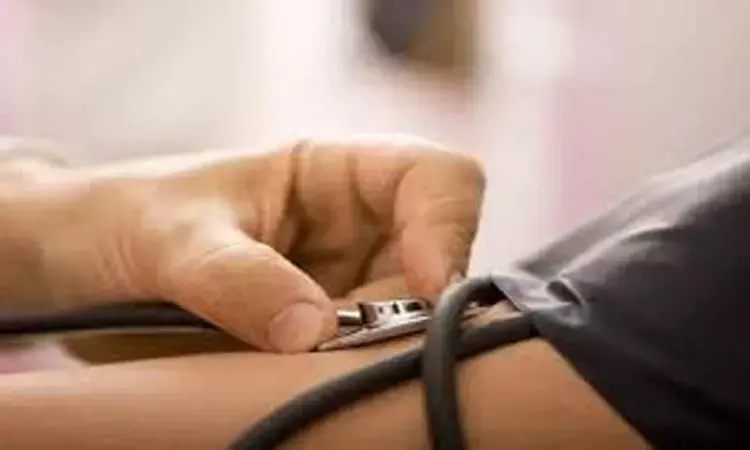- Home
- Medical news & Guidelines
- Anesthesiology
- Cardiology and CTVS
- Critical Care
- Dentistry
- Dermatology
- Diabetes and Endocrinology
- ENT
- Gastroenterology
- Medicine
- Nephrology
- Neurology
- Obstretics-Gynaecology
- Oncology
- Ophthalmology
- Orthopaedics
- Pediatrics-Neonatology
- Psychiatry
- Pulmonology
- Radiology
- Surgery
- Urology
- Laboratory Medicine
- Diet
- Nursing
- Paramedical
- Physiotherapy
- Health news
- Fact Check
- Bone Health Fact Check
- Brain Health Fact Check
- Cancer Related Fact Check
- Child Care Fact Check
- Dental and oral health fact check
- Diabetes and metabolic health fact check
- Diet and Nutrition Fact Check
- Eye and ENT Care Fact Check
- Fitness fact check
- Gut health fact check
- Heart health fact check
- Kidney health fact check
- Medical education fact check
- Men's health fact check
- Respiratory fact check
- Skin and hair care fact check
- Vaccine and Immunization fact check
- Women's health fact check
- AYUSH
- State News
- Andaman and Nicobar Islands
- Andhra Pradesh
- Arunachal Pradesh
- Assam
- Bihar
- Chandigarh
- Chattisgarh
- Dadra and Nagar Haveli
- Daman and Diu
- Delhi
- Goa
- Gujarat
- Haryana
- Himachal Pradesh
- Jammu & Kashmir
- Jharkhand
- Karnataka
- Kerala
- Ladakh
- Lakshadweep
- Madhya Pradesh
- Maharashtra
- Manipur
- Meghalaya
- Mizoram
- Nagaland
- Odisha
- Puducherry
- Punjab
- Rajasthan
- Sikkim
- Tamil Nadu
- Telangana
- Tripura
- Uttar Pradesh
- Uttrakhand
- West Bengal
- Medical Education
- Industry
Diastolic BP of less than 60 mm Hg harmful, finds JAMA Study

China: Lowering diastolic blood pressure (DBP) to less than 60 mm Hg is associated with an increased risk for cardiovascular (CV) events, finds a recent study. The study, published in the journal JAMA Network Open, suggests that DBP between 70 and 80 mm Hg should be an optimum target for patients with high cardiovascular risk and an treated systolic blood pressure less than 130 mm Hg.
Extremely low DBP is known to be associated with increased adverse CV events (ie, the diastolic J-shape phenomenon). The current US guidelines recommend an an intensive blood pressure target of under 130/80 mm Hg but doesn't mentions the lower DBP limit.Considering this, Jingen Li, Beijing University of Chinese Medicine, Beijing, China, and colleagues aimed to evaluate whether there is a diastolic J-shape phenomenon for patients with an treated systolic blood pressure of less than 130 mm Hg and to explore the safe and optimal diastolic blood pressure ranges for this patient population.
For the purpose, the researchers conducted a cohort study that analyzed outcome data of patients at high CV risk. They were randomized to intensive or standard blood pressure control and achieved treated systolic blood pressure of less than 130 mm Hg in the Systolic Blood Pressure Intervention Trial (SPRINT) and Action to Control Cardiovascular Risk in Diabetes–Blood Pressure (ACCORD-BP) trial.
Data were collected from October 2010 to August 2015 (SPRINT) and from September 1999 to June 2009 (ACCORD-BP).
The primary outcome was a composite of all-cause death, nonfatal myocardial infarction, and nonfatal stroke.
The analysis included a total of 7515 patients (mean [age, 65.6 years; 4553 [60.6%] men).
Key findings of the study include:
- The nominally lowest risk was observed at a diastolic blood pressure between 70 and 80 mm Hg for the primary outcome, the composite cardiovascular outcome, nonfatal myocardial infarction, and cardiovascular death.
- A mean diastolic blood pressure of less than 60 mm Hg was associated with significantly increased risk of the primary outcome (hazard ratio [HR], 1.46), the composite cardiovascular outcome (HR, 1.74), nonfatal myocardial infarction (HR, 1.73), and nonfatal stroke (HR, 2.67).
"The finding that a diastolic blood pressure value between 70 and 80 mm Hg was an optimum target for this patient population merits further study," concluded the authors.
The study titled, "Evaluation of Optimal Diastolic Blood Pressure Range Among Adults With Treated Systolic Blood Pressure Less Than 130 mm Hg," is published in the journal JAMA Network Open.
DOI: https://jamanetwork.com/journals/jamanetworkopen/fullarticle/2776530
Dr Kamal Kant Kohli-MBBS, DTCD- a chest specialist with more than 30 years of practice and a flair for writing clinical articles, Dr Kamal Kant Kohli joined Medical Dialogues as a Chief Editor of Medical News. Besides writing articles, as an editor, he proofreads and verifies all the medical content published on Medical Dialogues including those coming from journals, studies,medical conferences,guidelines etc. Email: drkohli@medicaldialogues.in. Contact no. 011-43720751


